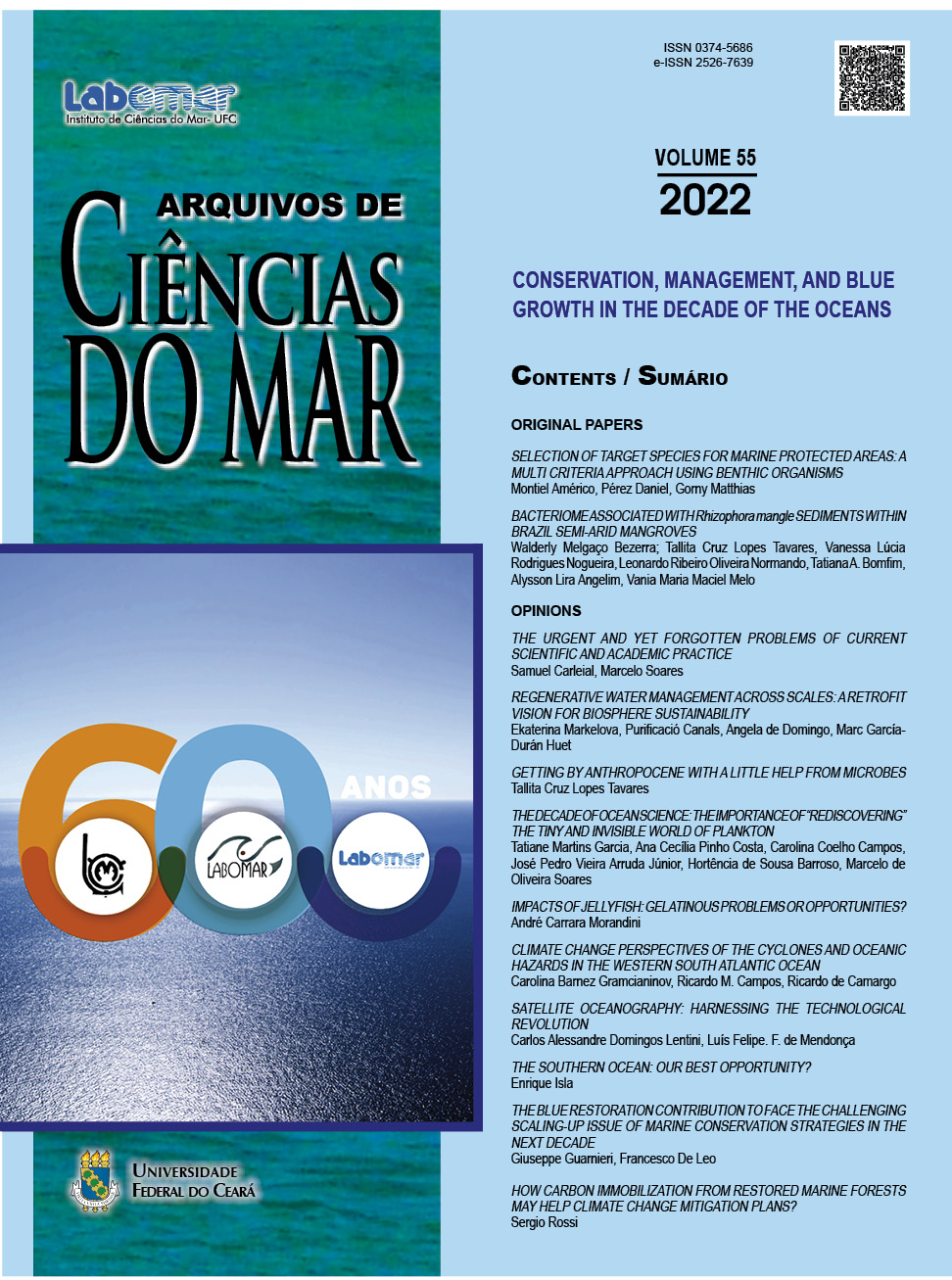SPREADING EUTROPHICATION AND CHANGING CO2 FLUXES IN THE TROPICAL COASTAL OCEAN: A FEW LESSONS FROM RIO DE JANEIRO
DOI:
https://doi.org/10.32360/acmar.v55iEspecial.78518Abstract
In Brazil and in many other tropical countries, large urban cities and populations are still growing on the coast and coverage in terms of sewage treatments is far from desirable. Cultural eutrophication is not solely a threat for the coastal ocean; it is now acting as one of its major biogeochemical and ecological driver. Along the littoral of the state of Rio de Janeiro, semi-enclosed marine bays and lagoons show clear spatial and temporal pattern of increasing concentrations of chlorophyll a (Chl a), organic carbon, and nutrients in their waters and sediments in urbanized regions. Acting as a buffer, the nearshore ecosystems have turned highly eutrophic and their autotrophic metabolism has been enhanced creating strong carbon dioxide (CO2) sinks. We compile here data of CO2
fluxes recently gathered in four coastal marine ecosystems in the state of Rio de Janeiro: the Guanabara Bay and the Araruama, Saquarema and Jacarepagua lagoons. We observed intense CO2 sources in restricted areas at the vicinity of sewage loads, where microbial degradation of organic matter predominates, and large CO2 sinks in confined and nearshore brackish, marine and hypersaline waters, where phytoplankton blooms occur. We also report a correlation
across the four ecosystems between the partial pressure of CO2 in waters and the Chl a concentration. Chl a satellite data all along the Brazilian coast suggest that the CO2 sink induced by eutrophication probably occurs in many coastal ecosystems including bays, lagoon and shelf waters, and could contribute to an additional blue carbon. Part of the additional organic carbon is stored in sediments, and part is exported offshore. However, this additional blue carbon has dramatic environment impacts as it would evolve toward the formation of marine dead zones, and could contribute to a production of methane (CH4) a more powerful greenhouse gas. We emphasize an urgent need for multidisciplinary research to promote simultaneously the storage of atmospheric carbon, and the preservation of biodiversity and socio-economic goods in the eutrophic tropical coastal ocean.
Keywords: tropical coastal ecosystems, cultural eutrophication, phytoplankton blooms, marine dead zones, blue carbon
Downloads
Downloads
Published
Issue
Section
License
1. Proposta de Política para Periódicos de Acesso Livre
Autores que publicam nesta revista concordam com os seguintes termos:
- Autores mantém os direitos autorais e concedem à revista o direito de primeira publicação, com o trabalho simultaneamente licenciado sob a Licença Creative Commons Attribution que permite o compartilhamento do trabalho com reconhecimento da autoria e publicação inicial nesta revista.
- Autores têm autorização para assumir contratos adicionais separadamente, para distribuição não-exclusiva da versão do trabalho publicada nesta revista (ex.: publicar em repositório institucional ou como capítulo de livro), com reconhecimento de autoria e publicação inicial nesta revista.
- Autores têm permissão e são estimulados a publicar e distribuir seu trabalho online (ex.: em repositórios institucionais ou na sua página pessoal) a qualquer ponto antes ou durante o processo editorial, já que isso pode gerar alterações produtivas, bem como aumentar o impacto e a citação do trabalho publicado (Veja O Efeito do Acesso Livre).

